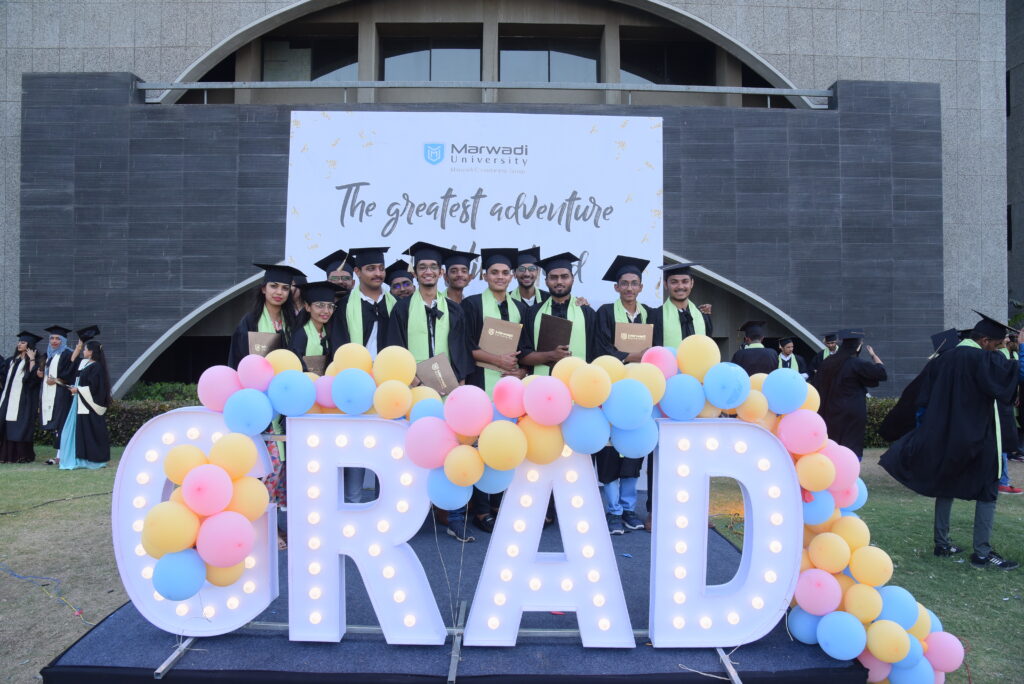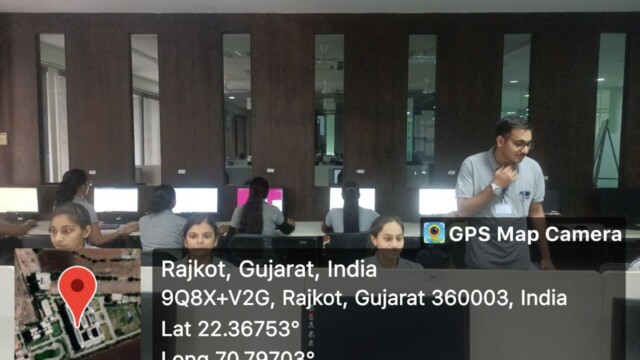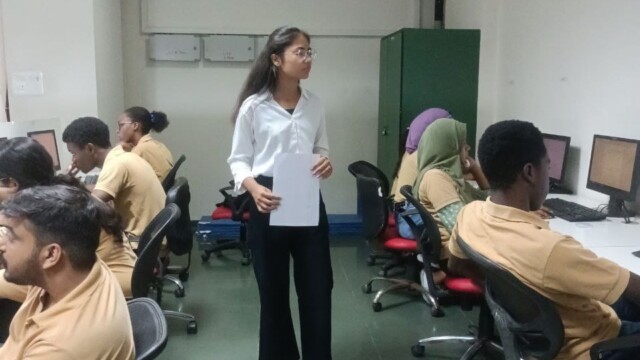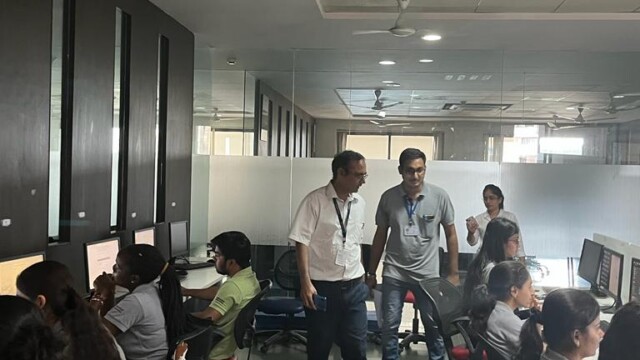Dear CLATizens,
Greetings from Faculty of Law (FoL) Marwadi University, Rajkot! As you are burning your midnight oil in studying of Common Law Admission Test (hereinafter CLAT) is not letting you down on how to crack this exam. No doubt, simply cracking CLAT is not enough for getting admission in the best law college. For that, you need to get good marks. The author is going to discuss the said hot topic i.e. CLAT and how to crack it. For easy understanding, our discussion is divided into three parts. Part 1 deals with the Pattern of Marking and evaluation; Part 2 is its syllabus and area of study and the last part is emphasizing on the techniques to score the top rank.
Part 1
The pattern of Marking and Evaluation
CLAT is the platform created by 18 National Law Universities (NLUs) & some top Private Universities (PU’s) and Law Schools of India, which facilitates all the law aspirants to get admission into it. The NLUs/ PU’s which are participating in CLAT generally follow their own admission norms on the basis of the ‘merit-cum-preference’, eligibility, reservation etc. The CLAT exam paper is of a total of 200 marks which is further divided into five sections. Each question carries 1 mark and there will be a deduction of 0.25 marks for each negative answer. The five sections are namely English including comprehension which carries a maximum of 40 marks; General Knowledge and Current Affairs for 50 marks; Elementary Mathematics (Numerical Ability) for 20 marks; Legal Aptitude for 50 marks and Logical Reasoning for 40 marks respectively. The exam mode is online and the total duration is 2 hours for 200 marks i.e. approximately you will get 1 minute and 30 seconds to answer each question. The level of questions varies from moderate to difficult. To gain more marks, you should concentrate more on Legal Aptitude section and General Knowledge/Current Affairs section. These two sections give the advantage to gain more marks. Again you have to give more importance to legal aptitude since it can help you more if there is a tie among two candidates’ marks. The tie is usually broken by considering the candidate with higher marks in the section of Legal Aptitude. If it doesn’t help then higher age is the second criteria. Still, if the tie is not broken then computerized draw of lots will be considered to declare the results.
Part 2
Syllabus for CLAT and area of Study
As we know that there are five sections in CLAT exam. Let us understand each one in subsequent paragraphs. Section one is English including comprehension that carries 40 Marks. The topic covered in this section is candidate’s proficiency in English and grammar. The grammar part is generally to test the knowledge of grammar and asks to apply correct grammar by filling in blanks, word meanings, etc. The comprehension section is to test the reading and grasping capacity of the student. The student’s capacity to understand the given passage and his/her ability to give rational answers is of utmost importance in this session.
Section two is on General Knowledge/ Current Affairs carrying 50 marks. This section generally comprises of knowledge of National and International importance: Positions of National/International Persons as well as that of the Resigned/Retired persons, Sports Honours/ Awards, Obituaries, Important Days, Foreign Visits, Foreign Visitors, etc.
Section three is Elementary Mathematics (Numerical Ability). Questions may come from whole of the basic mathematics which we have learned till class X. Since this section carries 20 marks, make sure that you are properly managing the total time.
Section four is on Logical Reasoning for 40 marks. This section is to test how the candidate can think and apply their logical skills. It includes various patterns to be identified and situations where correct arguments are to be selected. Questions may also be from syllogism, analogies, logical sequences, etc.
Section five is on Legal Aptitude having the maximum 50 marks. The purpose of this section is to test the candidate’s ability to understand and apply basic law to solve the problems. The questions may be based on hypothetical or problem based situations where candidates are asked to apply their judgment skills based upon law and its applicability. Please keep in mind that this section is as important as it is being used to resolve tie-breaking situation for the allocation of marks. Try to attempt all the questions and answer correctly.
Part 3
How to crack the CLAT syllabi and secure good marks
It is quite obvious that the sections which carry more marks should be handled more prudently. You should try to earn more marks in those sections. As we have discussed aforesaid that the legal aptitude is having more importance to resolve tie-breaking situation, we have to prioritize this section along with the general knowledge section. These two sections carry 50 marks each which have an overall 50% weightage in the total marks. Irrespective of student’s background whether he/she is from Arts, Commerce or Science, you need to put equal effort on all the three sections i.e. General Knowledge / Current Affairs, Logical Reasoning and Legal Aptitude. As students with commerce background have knowledge of Elementary mathematics (Numerical Ability), Arts students may have advantage in General Knowledge / Current Affairs and Science students in Logical Reasoning respectively. It is also possible that you may be equally good in all or some of the sections. You must first understand and decide in which section you are really having a hold. Accordingly, based upon your strength and weakness, you have to properly manage your CLAT preparation timing. Make sure that your answers to the questions are based upon the criteria you have already fixed for yourself to crack the exam.
English – This section is simply to test your competence in English. The comprehension passage is generally based upon one or more central themes. The questions will appear based upon the central theme. Sometimes questions will be asked about the meaning of some words which frequently appear or regarding the overall message/meaning that conveys to the reader. Second part is of grammar where you need to find correct/incorrect sentences, fill in the blanks, etc. Here you may find a lot of help from two books namely, “Word Power Made Easy” written by Norman Lewis and “Objective English” by Pearson. In fact, it is not easy to grasp whole lot of vocabulary in a limited period time as it needs a lot of effort and consistence. Nevertheless, keep reading newspaper’s especially editorial articles and special columns like “Speaking Tree” etc. It is also advisable to read magazines like Frontline, India Today etc. which will help in improving your vocabulary.
General Knowledge – Since the General Knowledge section is so vast, you have to focus on the most important areas relevant to the test. You can update the knowledge based on your syllabi of 10th Standard books on Geography, History, Civics and Science. Along with this you may also find good books like: “Lucent’s GK Guide” (General Knowledge); Clatgyan on “Current Affairs Compendiums” (Current Affairs) and for General Knowledge “General Knowledge Today”.
In Maths section, the questions usually come from elementary level which every one of you has studied till class X. After properly understanding the fundamentals of arithmetic, its application level needs more exercises. The more practice you do, the more it will improve your performance and save your time. There are some books which will help you to grasp the fundamentals of maths, especially the books written by R.S. Agarwal on “Quantitative Aptitude” and “Objective Arithmetic”.
Logical Reasoning – The objective is to check your ability and application of logical reasoning to the arguments, sequences, analogies and syllogisms, Blood Relations, Distance, Direction and Sitting Arrangements. In addition to these, the other important topics include Series, Analogy, Classification, Venn Diagrams, Statement-Assumption and Statement Arguments. The books that can help a lot are Universal’s “Logical Reasoning”, M.K Pandey on “Analytical Reasoning” and R.S Agarwal on “A Modern Approach to Verbal Reasoning” or “Reasoning and Mathematics”.
Legal Aptitude – This is one of the most crucial sections. Candidates will be tested on their inclination towards the study of law. Questions are generally legal propositions to solve through application of basic principles of law. The topics that are covered in this section are Constitution Law, Family Law, Torts, Contracts, Criminal Law, Public International Law and Intellectual Property Rights (IPR) law. More weightage should be given to Constitutional Law, Contract Law and Indian Penal Code since they are fundamentals of law which are applicable in day to day interactions. Comparative less weightage may be given to Family Law, IPR and Torts Law. Some of the books are P M Bakshi on Constitutional Law(short notes), Ascent Publications “Criminal Law I” by Ashok K Jain, Edition 2017 for IPC, The Pearson “Guide to the CLAT” by Pearson, Universal’s “LLB Entrance Guide” etc.
Last but not the least, solve online/offline last year’s questions papers of CLAT, LSAT and AILET/ Mock Tests. Try to improve your confidence level on logical reasoning and maths through regular practice so that you can speed up solving the questions which will help you to attain effective time management. To improve your skills you must go on rigid practicing, as practice makes a man perfect and don’t forget to put hard but smart efforts to crack CLAT.
Marwadi University wishes best of luck to CLATizens for CLAT 2018!!!
PS: This post has been originally written by Dr. Rahul J Nikam, Associate Professor, Faculty of Law, Marwadi University.
















 International Airport
International Airport  Railway Station
Railway Station  GSRTC Bus Port
GSRTC Bus Port 


